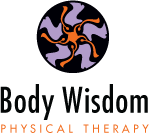About John F Barnes Myofascial Release
What is fascia?
The fascial system is an uninterrupted, 3-dimensional web of densely woven connective tissue, whose fibers infuse all tissues of the body including skin, muscle, bone, blood and lymph vessel, nervous tissue/brain, and internal organs. There are even fibers covering each cell body with tendrils reaching within the cell wall.
Fascia may be broken down into 3 components: collagen fibers, which provides tensile strength; Elastin fibers, which provides its elastic quality like a rubber band; and Ground Substance, which is a lubricant, allowing the fibers to glide against each other.
What is the function of the myofascial system?
'The myofascial system may be thought of as the system of guy-wires, which provides support and stability, protection, and gives our body its form. This network of fibers is able to withstand 2000 pounds per square inch. Without fascia our bodies would be a puddle of fluid.
What happens when fascia is injured?
Injury to the fascia can occur through direct trauma, inflammation, strain/sprains, chronic poor posture, repetitive stresses, birth, surgeries, and various diseases. When this occurs, new collagen fibers are laid down, and the ground substance (lubricant) solidifies. This results in a thickening of the fascia, decreased flexibility/pliability, and binding of the fascial system. This restriction may act as an "internal tourniquet", which may cause pain and/or diminished the function of the effected tissues/organs.
Because the fascial system is continuous from head to toe, if one area of the body has restrictions, it is like pulling a thread in a sweater-there may be seemingly unrelated symptoms in distal regions of the body from the original injury site.
Can fascia restrictions be seen through diagnostic testing?
No, the fascia does not show up on any standard diagnostic testing such as X-rays, MRI's, CAT Scans, or blood tests. For this reason, many people are left undiagnosed, and left suffering from their pain, with no treatment options offered.
What are the symptoms associated with fascial restriction?
Symptoms of fascial restriction may include muscle and joint pain, headaches, decreased flexibility/range of motion, diminished function of organs, weakness, tension/trigger points, and asymmetries in the body such as scoliosis.
How does JFB Myofascial Release work?
Myofascial release uses prolonged stretches or hold in areas of restriction, using pressure ranging from extremely light energetic holds to very deep, penetrating pressure, always following the releases of the tissues. The role of the therapist is to provide a calming and compassionate environment in which the therapist may facilitate the body's own inherent ability to heal itself.
It has been found that it takes a minimum of 90 to 120 seconds (or much longer in some cases) for the releases to occur through the piezoelectric effect. This phenomenon takes place when the fibers of the fascial system are placed under a gentle tensioning. Over time, this creates an electrical charge, which in turn will change the solidified ground substance (lubricant) back into its normal liquid form. This restores the flexibility and equilibrium within the fascial system.
MFR also utilizes many soft tissues mobilization techniques, movement therapy, muscle energy techniques, and self-treatment techniques to allow the patient to become independent in their own healing.
How does JFB Myofascial Release differ from other forms of treatment?
MFR is a comprehensive approach, which includes taking a detailed medical history, assessing postural imbalances, flexibility, joint range of motion, movement patterns, muscle weakness, and tissue textures. It assesses the mind/body complex as a whole interconnected unit, rather than a specific joint or body part. The origin of the pain and dysfunction are addressed, rather than only treating the symptoms as is done in many traditional medical settings. Authentic healing must also recognize the emotional component to pain and dysfunction. Through JFB MFR the patient may become in touch with the emotions associated with the pain or injury, which may be causing physical holding patterns. For these reasons, the effects of JFB MFR reach a deeper level, and are able to create longer lasting changes.





